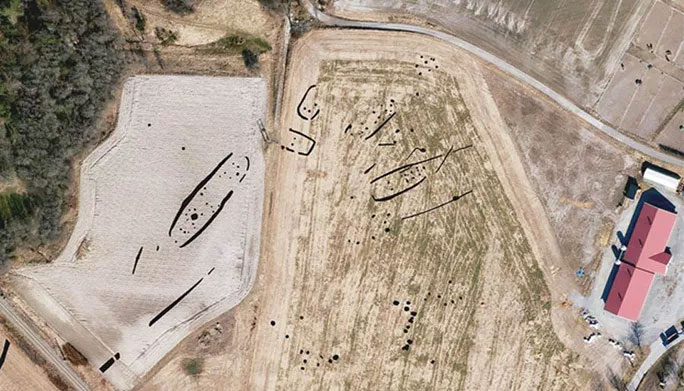The survey of a private land for water trench excavation has revealed massive ancient houses and numerous burial mounds, containing many artifacts that are considered an incredibly valuable archaeological treasure.
According to Ancient Origins, the excavation site is located in Gjellestad, Østfold, Southern Norway. The enormous ancient houses were used as religious or administrative centers, along with many ship burials and burial mounds belonging to the Viking nobility, which contain a treasure that has been identified through ground-penetrating radar.

The longhouses and ancient graves revealed through ground-penetrating radar images – (Photo: Norwegian Institute for Cultural Heritage Research)
The artifacts belong to the Iron Age in Northern Europe (550-1050 AD). Previously, another ship burial was discovered near the site, which is why the area was surveyed before the landowner began excavation, led by Dr. Lars Gustavsen from the Norwegian Institute for Cultural Heritage Research.
The burial mounds are surrounded by circular ditches and were used over many generations, functioning as a type of family tomb. One of the burial mounds is believed to conceal a ship burial, but archaeologists have not yet accessed it directly, so it remains unclear who is buried inside.
The ancient burial site is thought to contain many valuable artifacts, similar to the ship burial with numerous gold ornaments found earlier.
The location of this unique complex of houses and cemetery also indicates that it was the center of an ancient administrative or trading area, suggesting that there may be many more archaeological treasures hidden throughout the region.
A total of five Viking-style longhouses have been discovered in the area, with the largest being the last one found, measuring up to 60 meters in length. The smaller longhouses are also about 30 meters long, and thus could have been used for other public purposes.


















































